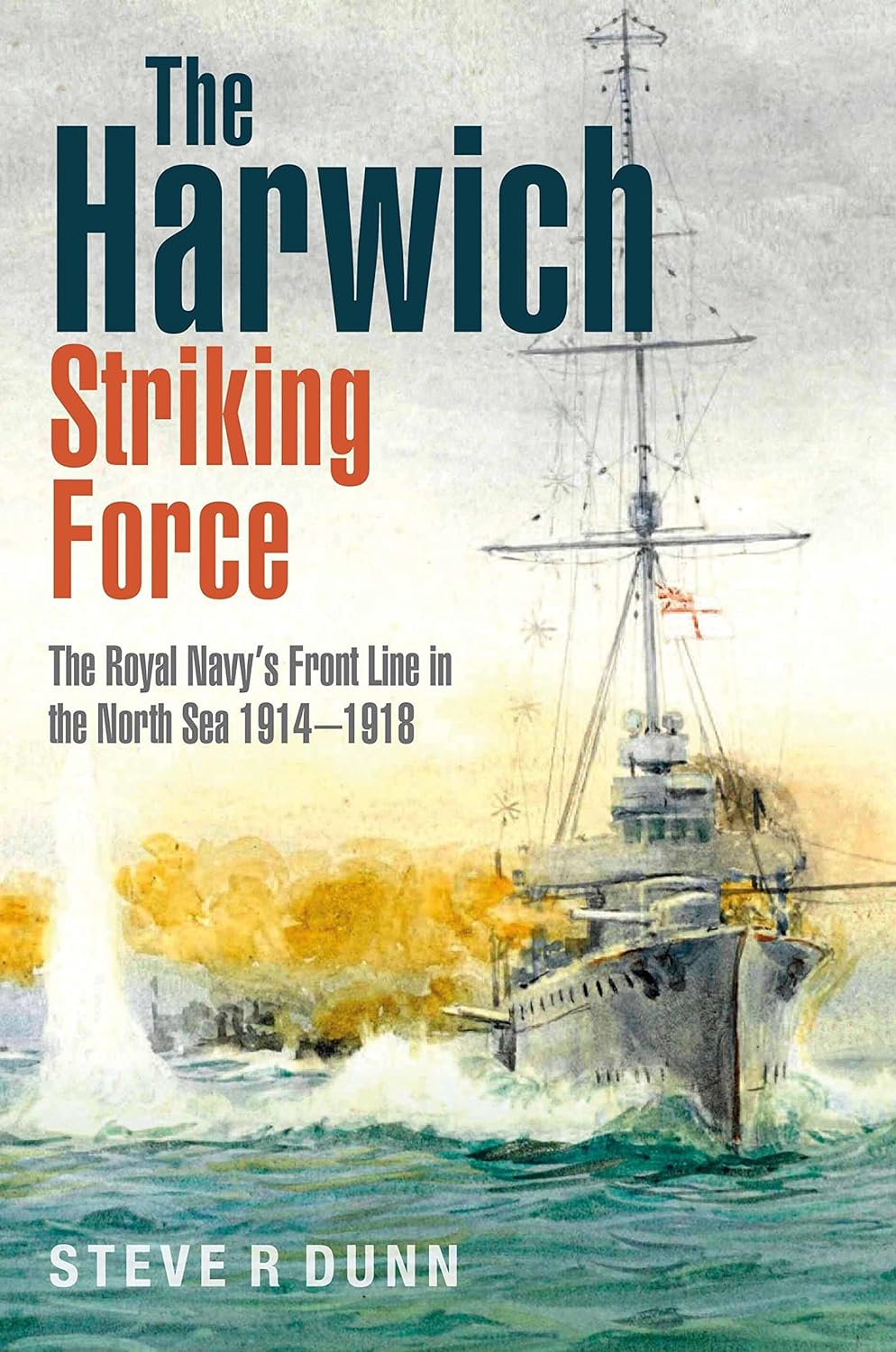The Harwich Striking Force: The Royal Navy's Front Line in the North Sea 1914 - 1918
By Steve R. Dunn

As World War I ramped up on the continent, the Royal Navy fought to secure the English Channel and thwart German efforts to disrupt Allied shipping in the Atlantic. This task largely fell to Admiral Reginald Yorke Tyrwhitt and the Harwich Striking Force. Under his command, the Striking Force combatted German minelaying operations in the North Sea, engage enemy naval forces, and pioneered naval aviation capabilities. Steve Dunn’s The Harwich Striking Force: The Royal Navy’s Front Line in the North Sea 1914-1918 chronicles the valiant efforts of Tyrwhitt’s command keeping the Imperial Navy at bay throughout the Great War.
Naval forces stationed at Harwich occupied many roles during the war, reflective of a Royal Navy adapting to modern naval warfare. The Striking Force performed observation duty as a vanguard of the Grand Fleet stationed up north. As the war progressed, they transitioned to blockading and counter U-boat measures. After Zeppelin and naval bombardments in east England, the public scrutinized the Royal Navy and their inability to defend the British coastline, consigning the Harwich Striking Force to shoreline patrol. Later in the war, Tyrwhitt’s charges performed convoy duties for the Dutch ‘beef fleet’.
Most notably, according to Dunn, the Harwich Striking Force pioneered naval aviation combat in the North Sea. At Cuxhaven, the German military established an airbase from which Zeppelins and other bombers could reach England. Tyrwhitt’s carriers HMS Engadine, Riviera, and Empress launched seaplanes on Christmas morning 1914 determined to neutralize the German threat stationed there. While ultimately unsuccessful, the sortie helped usher in a new era of naval warfare which Dunn brilliantly contextualizes through quotes from Churchill and Tyrwhitt expressing their enthusiasm for this new method of attack.
Dunn’s success in The Harwich Striking Force lies in his ability to craft a narrative that is totally encompassing of the naval force stationed in the Essex town. On the grand scale, Dunn’s work details the Force’s victories at Heligoland Bight and Dogger Bank, the tragedy felt after the sinking of each of Tyrwhitt’s ships, and the frustration felt by Tyrwhitt battling Admiralty bureaucracy which hindered his ability to combat the enemy. Yet, Dunn’s thorough research also gives the reader a glimpse into minute details of life in Harwich during the war, including how the town changed to accommodate the fleet and life as a sailor stationed there.
Few possess more knowledge of the Royal Navy during World War I than Steve Dunn. His research has led him to publish works on the Dover Patrol, the blockade of Germany, and naval efforts in the Baltic. With The Harwich Striking Force: The Royal Navy’s Front Line in the North Sea 1914-1918, Dunn sought to shed light on the all but forgotten efforts of Admiral Tyrwhitt and his command. His knowledgeable perspective of the Royal Navy in this conflict lets him place their triumphs within the larger background of the Great War. For readers seeking knowledge on a lesser known aspect of naval combat during World War I, The Harwich Striking Force is an excellent starting point.
- Barnsley: Seaforth Books, 2022
- 6-1/2” x 9-1/2”, hardcover, 336 pages
- Photographs, maps, appendices, notes, bibliography, index. $42.95
- ISBN: 9781399015967
Reviewed by: Will Nassif, University of South Carolina
